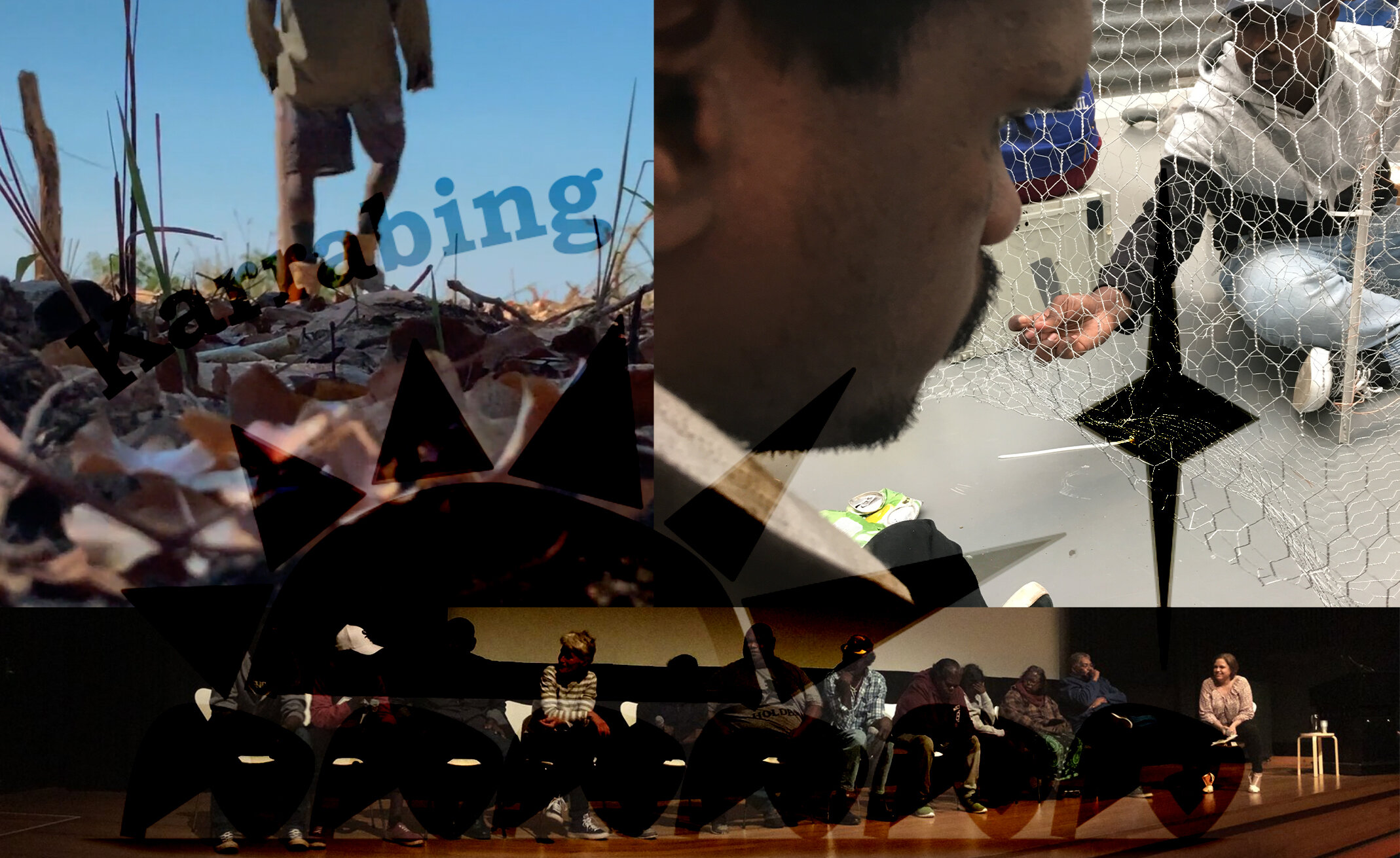
karrabing indigenous corporation
Karrabing consists of over 50 members, all but one Indigenous stakeholders for the land, with ages from new-born to elder. The Karrabing Indigenous Corporation seeks to integrate their parents and grandparents ways of life into their contemporary struggles to educate their children, create economically sustainable cultural and environmental businesses, and support their homeland centres.
Karrabing Indigenous Corporation’s success, we believe, comes from an openness to the actual rhythms of everyday life in the small rural community where most Karrabing reside. By encouraging our younger members to take artistic leads and refusing to abide by external production protocols, Karrabing have found that the interest of younger members in the lands from which the linguistic knowledge emerges has increased exponentially. The group already has about ten young members between the ages of 15-30 who are emerging as Karrabing leaders.
Karrabing is incorporated as a Not-for-Profit, Tax Exempt, Gift Receiving corporation under Office of the Register of Indigenous Corporations.
Roan-roan & Connected: That’s the Karrabing Way

Our projects
Karrabing Art Residency for Ancestors
The southern side of the Anson Bay, Northern Territory is home to crucially important spiritual and historical sites for Mentha, Emmi, and Wadjigiyn Karrabing. The region is ecologically defined by the vast Daly River tides, the extensive inland freshwater swamps, and coastal beaches and reefs.
The Art Residency for the Ancestors creates a direct link between the Karrabing Film Collective and their human and totemic ancestry of their lands. In conjunction with Serpentine, London, the Aboriginal Areas Protection Authority, and the Indigenous Language and Arts Program, KARA seeks to model Indigenous forms of art for ancestors as it enlivens the spirits of their country, the ancestral heritage, and the more-than-human-world.
KARA seeks an ecologically sustainable residence for not only for the creation of films and art works, but more importantly for an open air gallery whose primary audiences are their ancestral totems and relatives.
Karrabing Film & Art Collective
The Karrabing Film Collective uses the creation of film and art installations as a form of Indigenous grassroots resistance and self-organization. The collective opens a space beyond binaries of the fictional and the documentary, the past and the present. Meaning “low tide” in the Emmiyengal language, karrabing refers to a form of collectivity outside of government-imposed strictures of clanship or land ownership. Shot on handheld cameras and phones, most of Karrabing’s films dramatize and satirize the daily scenarios and obstacles that collective members face in their various interactions with corporate and state entities.
Composing webs of nonlinear narratives that touch on cultural memory, place, and ancestry by freely jumping in time and place, KFC exposes and intervenes into the longstanding facets of colonial violence that impact members directly, such as environmental devastation, land restrictions, and economic exploitation.
Karrabing Mapping the Ancestral Present
The Karrabing is working with multiple governmental and nongovernmental agencies to reconceptualise how the spiritual, ecological, and historical elements of their lands connect to each other. Refusing the fantasies of sovereignty and property, the Karrabing use their art works to bend western mapping technologies—including GIS & GPS based location technologies—to reflect a world connected through the ancestral agencies of the totems and their one commitments to keeping country live.
Currently KMAP focuses on the relationship between a stunning set of historical rock fish traps and the fish totems that shape their coastal region.


